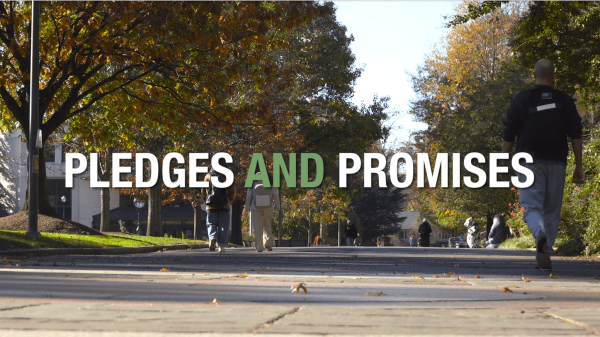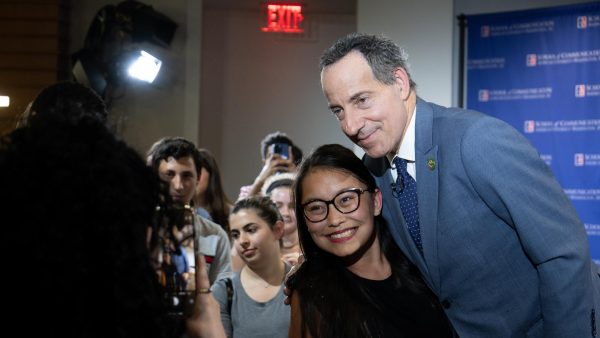Disclaimer: An Accurate Story About Fake News
Originally published in Spring 2017, Issue 21.
On Dec. 4, 2016, Edgar Welch, 28, walked into Comet Ping Pong, a pizzeria in D.C. and fired three shots in the restaurant. He believed Hillary Clinton was operating a hidden, child sex-trafficking ring in the restaurant. He has since plead guilty on March 24, 2017 to charges of assault and faces up to 20 years in prison.
Some integrity is undermined by the business nature of the industry.
Despite that the FBI determined that there was no sex-trafficking out of Comet Ping Pong, online “investigators” said differently on Reddit. Twitter bots, or Twitter counts that work to expand the reach of stories by retweeting them with frequency, spread the story to far-right news sites. The lies spread were fake news, or purposeful misinformation under the guise of it being true.
As seen with Comet Ping Pong, fake news can cause potential violence. Fake news has since become a topic following the election of Donald Trump, in which fake news targeting Trump supporters was circulated on social media. Fake news is troublesome for communication professionals as they try to combat it and even define it.
Maggie Farley spoke at a fake-news panel Feb. 27 at AU with other communication professionals. They said that journalism attempts to give readers the full context so they can decide for themselves what to believe. However, the news media still must rely on profits to continue running. Sometimes that means promoting sensational headlines.
“Adversarial headlines help promote more clicks,” said Anthony LaFauce, vice president of digital communications at Porter Novelli, a public relations firm. “That doesn’t mean content is untrue, but some integrity is undermined by the business nature of the industry.”
There is a fine line that journalists must walk to attract readers but still present accurate information. Attention-grabbing headlines draw people to stories like moths to a flame, which in turn grows profits.
According to Pew Research, only 47 percent of people who get their news on smartphones click to read the article. The other 53 percent only read headlines. This fact can encourage the media to create more clickbait content, meaning headlines are created for the main purpose of generating online advertising revenue. For the sake of profits, headlines try to be eye-catching but can also be misleading. But where does the line from a sensationalized headline cross into fake news?
“Fake news is knowingly false information made for some kind of game or end result,” said Maggie Farley, a digital media professional and fellow at AU.
There is a difference between a journalist who makes a mistake in a rush to publish and someone purposefully posting inaccurate news stories to deceive people.
“There are protocols old-school journalism goes through,” said Gross, principal at the public relations firm Scott Circle. “Like fact checking and getting two or more sources. The orientation is not to deceive.”
News organizations are starting to run campaigns to emphasize the importance of truth in a post-truth world. For example, The New York Times ran a television ad for the first time in seven years. It promoted the idea that although the truth may be difficult to know today, it is more important than ever. The Washington Post also added a new slogan to its website: democracy dies in darkness. This emphasizes that journalism can help the public make rational, informed decisions.
“I was a journalism major and I truly trust our journalism and our democratic society,” Gross said. “But with social media, everything is different. Fake news spreads like wildfire. Stories don’t have to have sources, statistics or studies.”
Organizations such as Politifact and FactCheck, a project of the Annenberg Public Policy Center, which fact-check political stories, are working with Facebook to combat fake news in social media. Facebook is now flagging stories that are considered inaccurate. The link will contain a disclaimer stating that the facts are disputed by FactCheck or other organizations.
“If they see that it has a disputed link, hopefully people won’t share the article around,” said Eugene Kiely, director of FactCheck. “The sooner the correct information is out there and presented in a way that people can access it at the same time they’re getting the misinformation, that’s the ideal situation.”
However, there is no guarantee people will stop sharing the disputed links.
“People are going to believe what they want to believe,” Kiely said. “Sometimes even when presented with accurate information people don’t want to acknowledge it.”
In other words, it is ultimately up to the public to decide what they want to believe in. Google just recently added a fact check label to its news and searches. The results page will feature information about the claim, who made the claim and whether the claim is true, false or somewhere in between.This will help provide the proper context about disputed claims on the internet, helping lessen the real-life implications of fake news.
“The reason it’s so hard to fight fake news is because it identifies with intense emotions and doesn’t provide the context,” Farley said. “If it makes you really angry or really excited, it’s not likely true. That’s a red flag.”
Laura Saini is a senior studying journalism and law.












